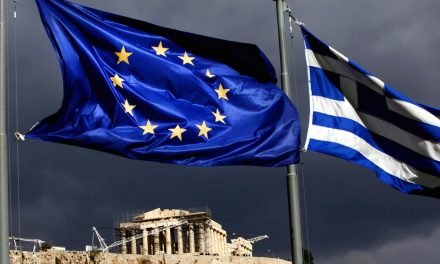The president looks the part only if you believe his predecessor was the norm.
By Ted R. Bromund, Newsday
In assessments of President Donald Trump’s first year in office, a common theme among commentators has been that he falls outside the American political mainstream. In some ways, that’s true. But in most ways, he’s been traditional. It was his predecessor, Barack Obama, who was the radical.
How do we judge presidents? Partly by looking at their records, and partly by comparing them with their predecessors. George H.W. Bush was no Ronald Reagan. That’s not “whataboutery” — a way of excusing your sins by pointing to those of another. It’s comparing like with like.
CNN reporter Stephen Collinson describes Trump as being on an “anti-establishment crusade” and pursuing what many Americans view as a horrifying diplomacy that “goes against everything the U.S. should stand for,” including human rights. Collinson’s colleague, journalist Ben Wedeman, says that, in the Middle East, the United States is “threatening to repudiate international agreements . . . and breaking from long-held positions.”
Trump has broken with some U.S. postwar traditions. It’s hard to think of another president who would have quit the Trans-Pacific Partnership, the free trade pact that many welcomed as a way of containing China. And while I can imagine Lyndon Johnson tweeting, Trump’s shoot-from-the-hip style horrifies many — not just people who didn’t like him in the first place.
But in most respects, Trump has not governed as a radical. Instead, he’s been a reversion to the Republican norm. It was Obama, not Trump, who spoke of “fundamentally transforming” and “remaking” America. Those are big goals, radical in their size and scope.
And Obama wasn’t all talk. He changed our health care system. He spent almost $1 trillion in a single so-called stimulus act. That same act contained protectionist “buy America” provisions that would make Trump proud.
Nor was Obama a great promoter of democracy abroad. The word, in fact, didn’t even appear in his first inaugural address. He reached out to Cuba’s Fidel Castro, was particularly close to Turkey’s autocratic Recep Tayyip Erdogan, and presided over a decline in defense spending, to a share matched only by Bill Clinton in the peaceful late-1990s. All that broke from American postwar tradition.
In 1997, the Senate rejected the Kyoto Protocol on climate change by 95-0. Obama solved that problem by signing the Paris Climate Accord on his own authority. Abroad, he sought — as an aide infamously put it — to lead from behind, and his White House bragged about creating a media “echo chamber” to approve the Iran deal. Imagine the furor if Trump done or said any of that.
True, in some ways, Obama was conventional. Like Trump, he criticized the European members of NATO for not spending enough. And true, Obama never called himself a “very stable genius.” But Obama did say that he knew “more about policies on any particular issue than my policy directors.” So Obama, as he saw himself, wasn’t merely a very stable genius: He was a universal one.
Obama wasn’t elected as a status quo leader, and in many areas, he didn’t govern like one. You may like that, or you may not. But if you voted for Obama, you should have the honesty to admit that one reason he was so popular was that he stood for radical change. Trump, by contrast, is in many ways a standard-issue Republican: pro tax cuts, deregulation, energy development, Israel and peace through strength — and skeptical of the more useless parts of the UN.
So who’s the radical here?
Trump looks like a radical only if you believe that Obama is the norm. And that is precisely what a lot of people on the left want. They believe that America is shot through with unfairness, sexism and racism, that it needs a fundamental transformation, and that it should look a lot more like Europe.
If that’s what you believe, OK. But don’t tell me that it’s not a radical agenda.
Ted R. Bromund is a senior research fellow in The Heritage Foundation’s Thatcher Center for Freedom.



















